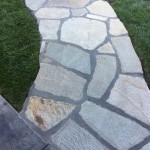A Guide To Concrete Patios In Columbus, Ohio Area 2024
Concrete patios remain a popular choice for homeowners in the Columbus, Ohio area. Their durability, versatility, and relatively low maintenance make them an attractive option for outdoor living spaces. However, navigating the specifics of concrete patio construction in Central Ohio requires an understanding of local climate considerations, design options, and the permitting process. This guide aims to provide a comprehensive overview for those considering a concrete patio project in Columbus and its surrounding suburbs in 2024.
Understanding the Columbus Climate and Its Impact on Concrete Patios
Columbus, Ohio experiences a humid continental climate characterized by significant temperature variations throughout the year. Summers are typically warm and humid, while winters can be cold with frequent freeze-thaw cycles. These conditions exert considerable stress on concrete surfaces, making proper planning and execution crucial for the longevity of a concrete patio.
The freeze-thaw cycle, in particular, poses a significant threat. When water penetrates the concrete and subsequently freezes, it expands, creating pressure within the material. Over time, this repeated expansion and contraction can lead to cracking, spalling (surface flaking), and other forms of deterioration. Therefore, selecting the appropriate concrete mix and implementing proper installation techniques are paramount in mitigating these risks.
The concrete mix used in Columbus patios should be specifically designed to withstand freeze-thaw conditions. This typically involves incorporating air-entraining admixtures, which create microscopic air bubbles within the concrete. These air bubbles provide space for water to expand during freezing, relieving pressure and minimizing the risk of damage. The concrete should also have a relatively low water-cement ratio, which reduces permeability and limits the amount of water that can penetrate the surface. A typical mix for a patio in Columbus should be 4000 PSI or better.
Proper drainage is also crucial. The patio should be sloped away from the house to prevent water from pooling on the surface. This can be achieved by creating a slight incline during installation, typically around one-quarter inch per foot. A well-designed drainage system, such as a French drain or properly graded landscaping, can also help channel water away from the patio area.
Furthermore, sealing the concrete surface is highly recommended. A quality concrete sealer will help to protect the concrete from water penetration, stains, and de-icing salts, further extending its lifespan. Sealers should be applied periodically, typically every one to two years, depending on the type of sealer and the level of exposure to the elements.
Design Considerations for a Concrete Patio in Columbus
Beyond structural integrity, the design of a concrete patio plays a crucial role in its overall aesthetic appeal and functionality. Numerous design options are available, allowing homeowners to customize their patios to suit their individual preferences and needs. Considerations should be given to size, shape, color, texture, and potential features.
The size of the patio should be proportionate to the size of the yard and the intended use. Consider how many people will typically be using the patio at one time and what activities will be taking place. A small patio may be sufficient for a couple, while a larger patio may be necessary for hosting parties or accommodating outdoor furniture.
The shape of the patio can also contribute to its aesthetic appeal. Common shapes include rectangular, square, circular, and freeform. Rectangular and square patios are often the easiest to construct and may be suitable for more formal settings. Circular and freeform patios can add a touch of uniqueness and may be better suited for more informal settings. Careful consideration of how the patio shape integrates with the existing landscaping and architecture of the home is crucial.
Concrete is not limited to a plain gray finish. Colored concrete can be achieved through the addition of integral pigments to the concrete mix or through the application of stains after the concrete has cured. A wide range of colors are available, allowing homeowners to match their patios to their homes or landscaping. Stamped concrete is another popular option, which involves using patterned stamps on the wet concrete surface to create the appearance of brick, stone, or other materials.
Texturing the concrete surface can also enhance its aesthetic appeal and improve its slip resistance. Common texturing techniques include broom finishing, which creates a textured surface using a broom, and exposed aggregate finishing, which involves removing the top layer of cement to expose the aggregate material within the concrete. These techniques can add visual interest and provide a more tactile surface.
Finally, consider incorporating additional features into the patio design. This may include built-in seating, fire pits, outdoor kitchens, or landscaping elements. These features can enhance the functionality and enjoyment of the patio, creating a more inviting and comfortable outdoor living space. Integrating lighting is also crucial for evening use, enhancing both ambiance and safety.
Navigating the Permitting Process in Columbus and Surrounding Areas
Before beginning any concrete patio project, it is essential to determine whether a building permit is required. Permit requirements vary depending on the municipality and the scope of the project. In general, permits are typically required for patios that exceed a certain size or that are attached to a structure. Contacting the local building department is the most reliable way to determine whether a permit is necessary.
The City of Columbus Building and Zoning Services provides information on permit requirements and the application process. Similar departments exist in surrounding suburbs such as Dublin, Westerville, and Hilliard. These departments typically require the submission of detailed plans showing the proposed patio design, dimensions, and location on the property. The plans must also demonstrate compliance with local zoning regulations, building codes, and setback requirements. Setback requirements dictate the minimum distance that a structure must be set back from property lines, streets, and other structures.
The permit application process can take several weeks, so it is important to allow sufficient time for review and approval. It is also important to note that inspections may be required at various stages of the construction process. These inspections ensure that the work is being performed in accordance with the approved plans and building codes.
Failure to obtain the necessary permits can result in fines, delays, and even the requirement to remove the patio. Therefore, it is essential to thoroughly research the permit requirements and comply with all applicable regulations before starting any construction work. Working with a qualified contractor who is familiar with the local permitting process can also help to ensure a smooth and hassle-free experience.
Beyond the building permit, homeowners should also be aware of potential restrictions imposed by homeowners' associations (HOAs). Many HOAs have rules regarding the type and size of patios that are allowed, as well as restrictions on colors, materials, and landscaping. Reviewing the HOA's covenants and obtaining approval from the HOA before starting any work is essential. Failure to comply with HOA regulations can result in fines or the requirement to remove the patio.
Finally, it is always a good idea to contact utility companies before digging to avoid damaging underground utilities. Call 811 before you dig. This service will notify utility companies of your planned excavation, and they will mark the location of their underground lines. Damaging underground utilities can be dangerous and can result in costly repairs. By taking these precautions, homeowners can ensure a safe and successful concrete patio project.
In Columbus, concrete contractors should be familiar with the city and surrounding suburbs' requirements for inspections, permitting, and general rules around working in the area.
In 2024, homeowners should be sure to check with local organizations for the latest information to stay on top of any changes to the procedures.

A Guide To Installing Proper Base For Your Ohio Paver Patio Columbus Landscape Company

Paver Patios Installation Services In Columbus Oh Outdoor Fx

Columbus Ohio Stamped Concrete Professionals

Franklin County Ohio Stamped Concrete Contractors

Paver Patio With Steps Columbus Ohio Suncraft

New Custom Patio Transforms This Grove City Oh Backyard

Columbus Ohio Stamped Concrete Professionals

Outdoor Living Remodeling Services In Columbus Oh Fx

Patio Paver Patios Design Columbus Upper Arlington Grove City Delaware Westerville Dublin Lewis Center New Albany Powell Hilliard Pickerington Oh

Pouring Concrete General Info Tips Local Contractors
Related Posts








